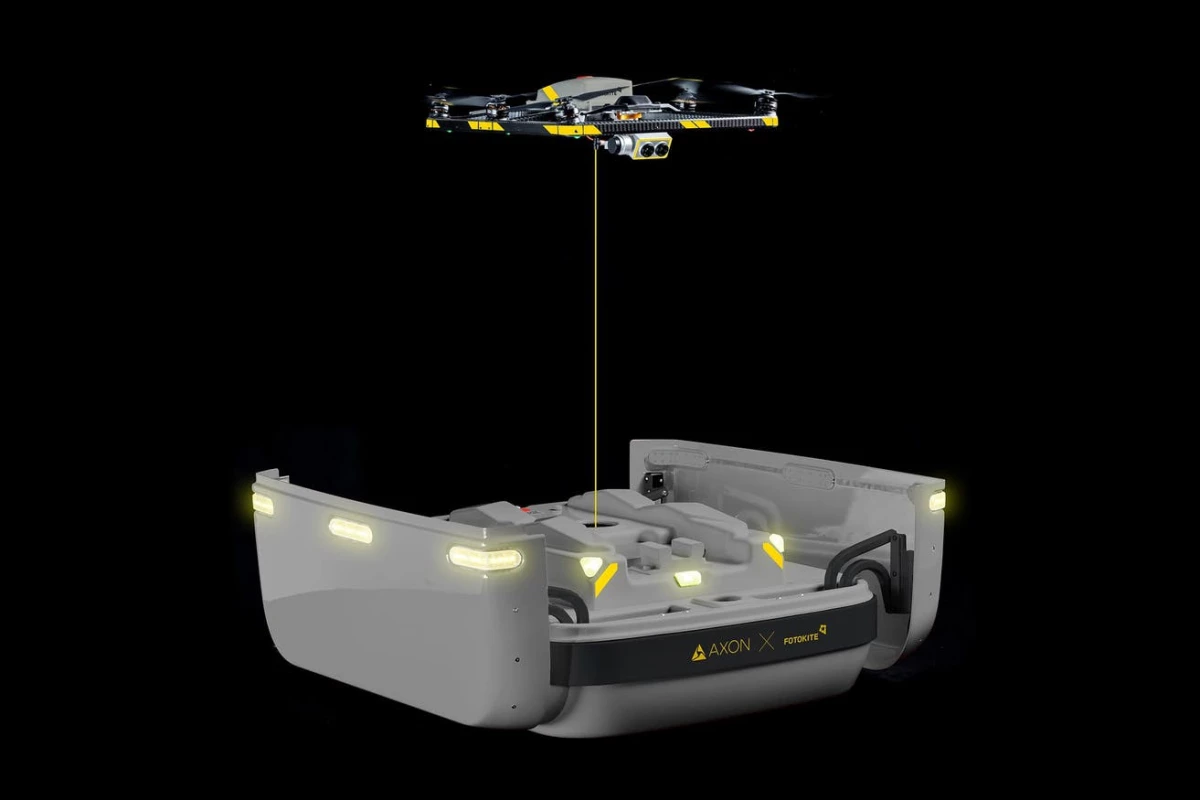Drones may be seeing increased use by police forces, but the things are still limited by relatively short flight times, and the need for certified operators. Public safety tech company Axon has set out to address the problem, by leveraging the existing Fotokite tethered drone.
We first heard about the Fotokite in 2015.
Designed by Russian roboticist Sergei Lupashin, it's essentially an electric quadcopter on a long, reeled tether. That tether delivers power up from a ground-based high-capacity battery or electrical outlet, plus it relays real-time HD video down from the drone's onboard camera. This means that the aircraft can stay aloft in one location for hours a time, continuously transmitting video.
And while the drone can be manually controlled via a smartphone or tablet, it can also fly autonomously, simply holding a given altitude and orientation. What's more, because it's safely tethered to the ground, the US Federal Aviation Administration (FAA) allows it to be flown in urban areas without the need for waivers or an operator's license.
That's one of the main reasons it's been incorporated into the new Axon Air system.
Instead of waiting for a certified pilot to arrive at a crime or accident scene, police officers could immediately deploy the drone themselves. It would then hover at an altitude of up to 150 feet (46 m), continuously providing a real-time bird's eye view of the situation. The video can be live-streamed to a command center, plus it can also be logged in the company's Axon Evidence system.
Axon Air could additionally be utilized in applications such as traffic management, routine surveillance, or search and rescue. It should be available to law enforcement agencies in the US and Canada next year – pricing has yet to be announced.
Source: Axon




